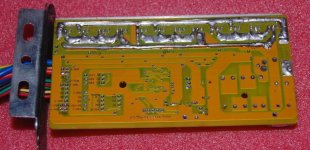steveo said:Hey Fechter
I will try placing a 1k resistor accross r7; I am currenting using a 10k + 5k resistor in series with my 100k pot; What resistance should i try in series with my 100k pot?
thanks
-steveo
The value of the fixed resistor in series with the pot will determine the upper limit. I'd try using just the 10k to start and see what you get. If it maxes out too low, then use a lower value.


